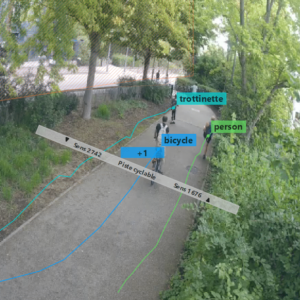The mobility barometer: a strategic tool for travel planning
Mobility is a major issue for local authorities of all sizes. It is at the heart of discussions on regional development and quality of life for local residents. In order to understand all the issues involved, mobility researchers need accurate and regular data on users’ travel needs. This is where the mobility barometer comes in.
This is a survey method used to gather data on people’s travel needs and habits. It can be conducted in territories not covered by traditional household surveys or in addition to the latter in order, for example, to bring a finer granularity to the household survey, whether spatially (finer zoning on a specific territory) or temporally (intermediate barometer between 2 household surveys).
Like the household survey, the mobility barometer consists of questioning a sample of the population about their trips the day before (travel chain, modes, reasons, etc.) in order to have a precise picture of users’ needs and habits.
This tool is therefore absolutely essential to support public policies in terms of transport provision and road development.
In this article, we’ll look at the benefits and applications of the mobility barometer, as well as how it works and its methodology.
What is the Mobility Barometer?
The mobility barometer is a survey method designed to collect data on the movements of users in a given area by means of a questionnaire. Unlike face-to-face household travel surveys, which require data to be collected on all members of the household, the mobility barometer can be completed by a maximum of one or two people per household. There are fewer questions to complete than in a traditional household survey, which makes it easier to administer.
The preferred method of data collection is by telephone. This is the most appropriate method for drawing up an effective representative sample.
Lastly, the mobility barometer can be administered on a one-off basis to provide a snapshot of user behaviour at a given point in time, or on a regular basis, generally every year, to collect up-to-date data and monitor changes in behaviour.
How does the mobility barometer work?
The method
The mobility barometer is based on a rigorous survey methodology, which guarantees the quality of the data collected.
Step 1: Define the sample
A mobility barometer targets the population of a specific territory. Just like a CME², the sample constitution step is essential and will determine the representativeness of the results on the territory. This already involves the definition of a zoning that is consistent with the objectives pursued by the barometer. The study area is thus divided into homogeneous areas within which a certain number of surveys will be carried out. The number of surveys must be set in relation to the population of each area and allows for a representative representation of the said areas. Statistically representative indicators will therefore be established for each zone (travel flows, modal shares, reasons, etc.). However, it will be impossible to go down to a finer scale of analysis at a later date, which is why this work of defining the zoning, and therefore the sample, is essential.
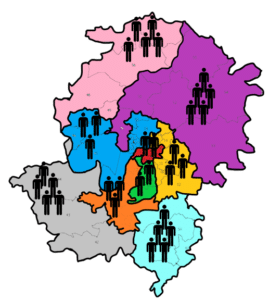
Step 2: Compile the questionnaire
A mobility barometer is a very specific type of survey. Depending on the information required by the local authority, the scenario of questions to be put to the respondent may have several levels of complexity.
Basically, the questionnaire is based on a description of all the journeys made by the respondent on the day before the survey. This approach provides a factual view of journeys made, rather than information based solely on the habits of the respondent.. In this way, the survey is not limited to the most frequent trips. For example, if the respondent has travelled by train for business reasons, which they do not necessarily do on a regular basis, this journey will be accurately recorded.
Collecting this information will not distort the overall analysis of journeys (on the contrary), as the sample allows this type of unusual journey to be representative of an average situation across the region.
In addition to this section on the previous day’s travel, the questionnaire is then adapted to the needs of each project owner and a certain number of questions can therefore be asked on other criteria. Ultimately, the questions asked enable us to gather precise information on users’ travel needs, such as :
- Reason for travel
- Frequence
- Distance covered
- travel time
- type of transport chosen
- Travel schedules
- Reasons for choosing one mode of transport over another
- Users’ perceptions of the available transport offer
- Service quality assessments
- Opinions on forthcoming projects
Stage 3: Counting
Once this information has been collected, it is analysed to build up a set of indicators that can be used to characterise users’ travel needs. During this stage, we proceed :
- to adjust the sample, so that the analyses carried out are fully representative of the territory’s population.
- the correction of panel biases (e.g. if the proportion of men or women surveyed is not consistent with the data observed in the territory or if the structure of households differs).
Once this work has been completed, the results can be presented in the form of tables, graphs or maps, depending on the user’s needs.
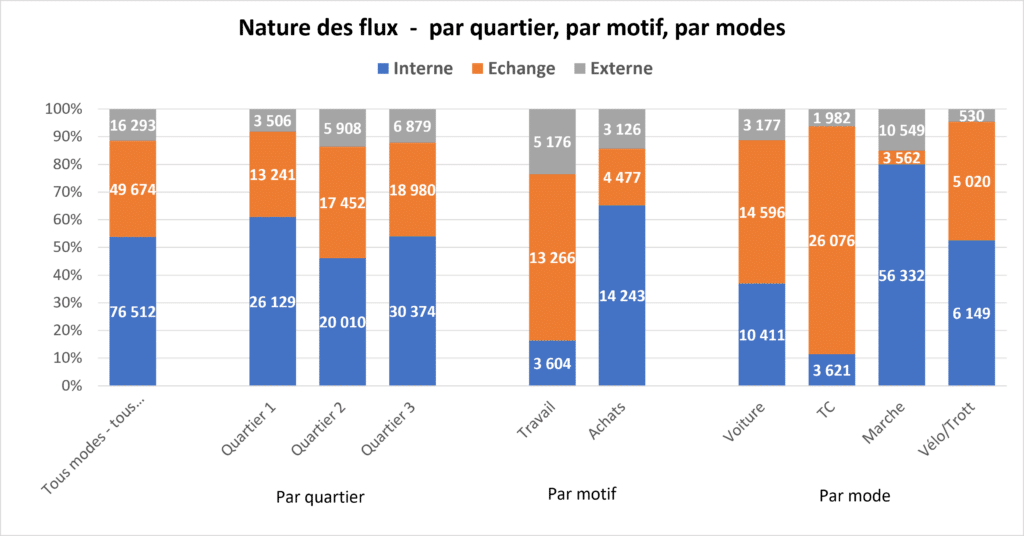
Objectives
The mobility barometer provides a report on travel in a given area. This report is then sent to the various departments within the local authority. They can also share it with the various economic players in the region. The results of the Mobility Barometer provide :
- To have an overall, coherent view of travel by mode, purpose and distance travelled,
- To update an old survey and note the changes in behaviour since it.
- Participate in the assessments of the SCoT and the PCAET and any other document relating to the organisation of mobility,
- Anticipate changes in the organisation of urban/interurban transport,
- Study the different market shares and potential customer bases for public transport,
- A better response to environmental issues,
By combining a rigorous methodology with a high degree of flexibility, the mobility barometer offers a valuable tool upstream of transport projects, but also downstream, with a view to evaluating public policies.
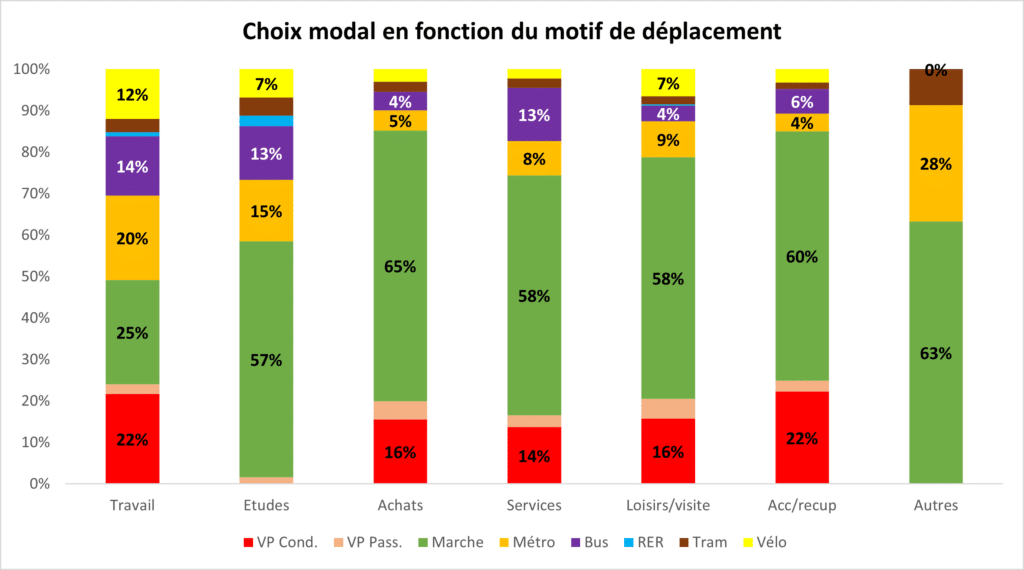
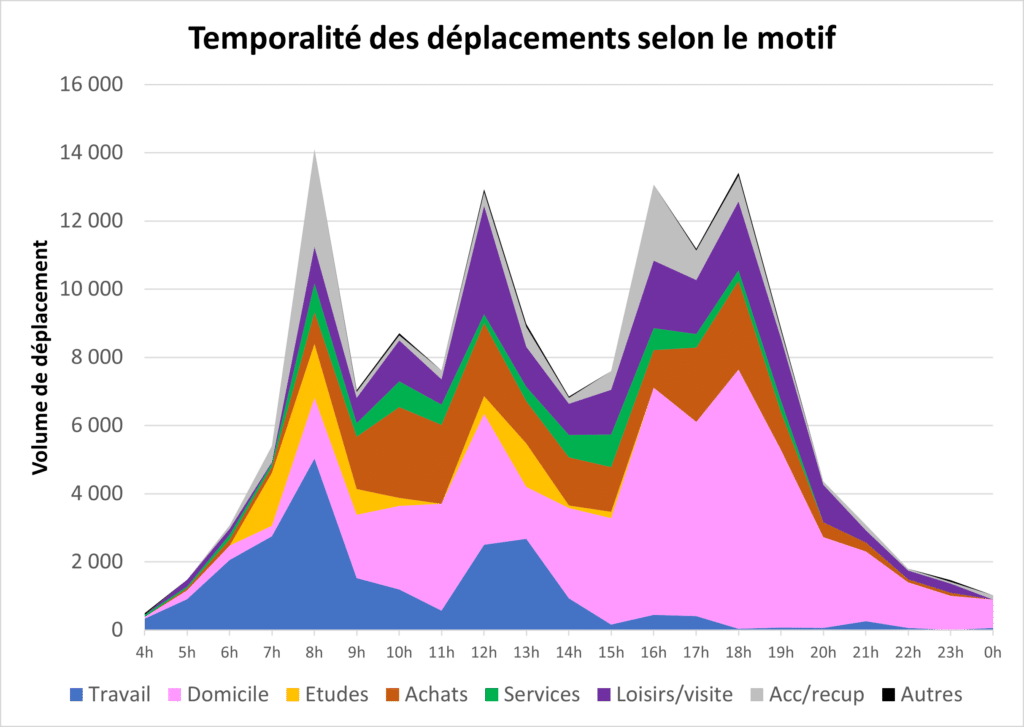
Mobility barometer applications
The barometer offers a wide range of applications for local authorities and mobility researchers, who want to better understand the travel needs of users and adapt their transport offer accordingly.
Some examples of applications of the mobility barometer
Adapting the public transport offer to users' needs
If the results of the barometer show that a large number of users want to go to a particular area, for example, the local authority can decide to improve the public transport offer in that area (by adding bus routes or improving the accessibility of existing bus stops).
Road Development Planning
The information gathered by the barometer classifies the origin-destinations according to their volume and inter-distance. This data can be used to identify priorities for the development of cycle lanes or major public transport routes.
Evaluation of the mobility policies put in place
The barometer facilitates the evaluation of the commissioning of a bus lane through the evolution of the modal share of public transport, for example. The evolution of the bicycle modal share with regard to the investments made in the development of cycle lanes and bike-sharing services also makes it possible to understand the impact in an objective manner.
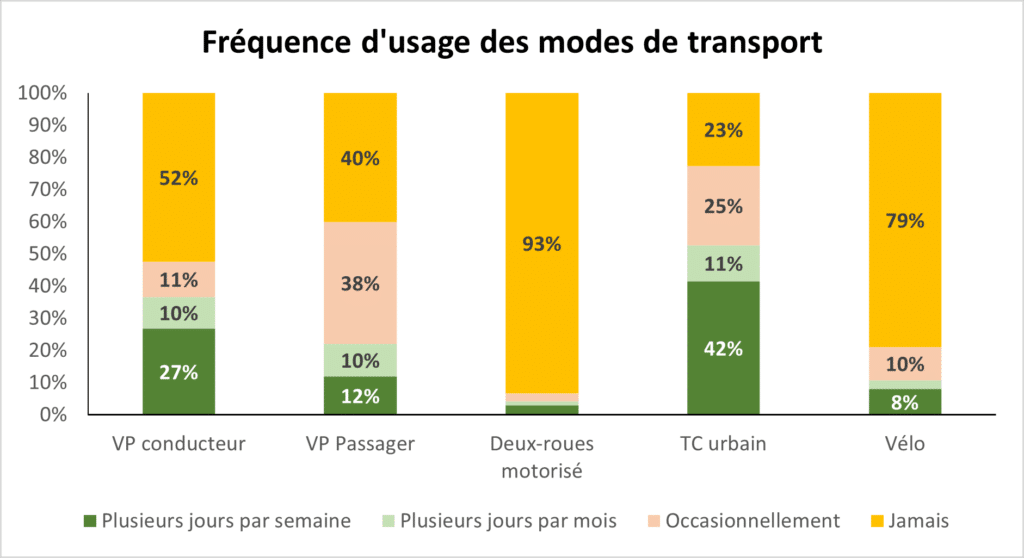
Anticipating the future mobility needs of residents
By feeding data from the barometer into a travel model, local authorities can, for example, anticipate changes such as the arrival of new residents or the construction of new public facilities.
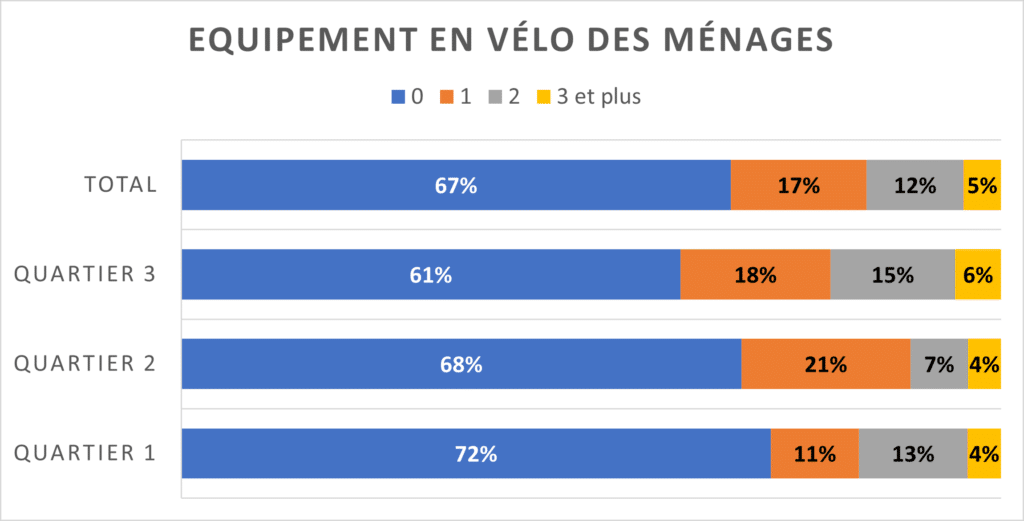
The benefits of the mobility barometer
- Flexibility: the mobility barometer makes it possible to adapt the survey to the specific needs of each local authority or territory, by modifying the questions in the questionnaire or by targeting particular user groups.
- Cost: the mobility barometer is a less expensive survey method than traditional household travel surveys.
- Speed: the mobility barometer makes it possible to collect data quickly, thanks to paperless administration
- Reliability: the Mobility Barometer is based on a rigorous methodology and collects reliable and accurate data on travel needs.
- Adaptation: the barometer can be carried out independently or as a complement to a traditional household travel survey carried out every 10 years on average. In all cases, it provides additional knowledge of the functioning of a territory.
- Versatility: the mobility barometer analyses residents’ journeys in a homogeneous way over a large and diverse area, particularly at the following levels:
- urban,
- suburban,
- extraurban
- rural
In conclusion, the barometer is a modern, effective and inexpensive tool for meeting the need for information about users’ travel habits and modes. Used in conjunction with traditional CEREMA-standard household surveys, it provides mobility managers and local authorities with reliable, accurate data to help them better understand and plan tomorrow’s mobility. What’s more, as they are simpler, less costly and less cumbersome to implement, they can be renewed more frequently, providing a better picture of mobility trends in the area concerned.

- Publié le
What is the modal split in your area?
Leave your contact details for a free 30-minute consultation with one of our mobility barometer experts ➡️



